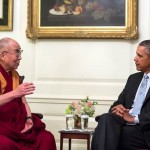
I want to bust a myth associated with what it truly means to “practice mindfulness.” And I want to share some tips about how to bring mindfulness into your life.
I have found that the most common misconception about mindfulness meditation is that it can only be achieved “on the cushion.”
That is, unless we are sitting in the lotus position on a cushion, eyes closed, back aligned, thumbs grazing forefingers, hands resting on thighs, then we aren’t practicing mindfulness.
No doubt, this is a feasible and efficient way to cultivate mindfulness. But it’s not the only way.
3 Steps To Mindful Living
I like to conceptualize three categories of mindfulness practice that we can engage in for increased well-being!
1. Formal Meditation
This is what I refer to when I speak about “on the cushion.” It entails intentionally taking time out of our schedule and finding a specific physical space to embark on meditative practice.
This time gives us an opportunity to bear witness to our minds, and to understand and reflect upon our habitual tendencies with a sense of kindness and curiosity rather than judgment.
2. Informal Meditation
The amazing thing about mindfulness is that you can apply it to any action you engage in on a daily basis; cooking, cleaning, walking to work, talking to a friend, driving – anything at all.
In this way, we can continue to deepen our ability to be mindful and train our mind to stay in the present moment rather than habitually straying into the past or future.
Here’s the basic idea. We don’t need to be sitting somewhere specific in order to stay non-judgmentally present to every sensation as it unfolds.
Informal mindfulness meditation means we can rest in mindful awareness at any time of day, no matter what we’re doing.
3. Mindful Living
We begin to live mindfully when our continued formal and informal mindful meditation practices positively impact our relationship with ourselves and with others.
Mindfulness then becomes both a practice and a way of life.
It is not necessarily meditation at all, but the by-product, so to speak. In fact, by engaging in both formal and informal meditation practice, you can cultivate a way of being and a way of life that embodies mindfulness-based principles like gratitude, loving-kindness, and compassion.
While I do guide my patients in both more formal and informal mindfulness practice, the crux of the work we do falls under the category of mindful living.
Nurturing The Power To Choose Our Response
To me, the essence of mindful living is summed up in Dr. Viktor Frankl’s quote:
Between stimulus and response there is a space. In that space is our power to choose our response. In our response lies our growth and our freedom.
With this definition, mindfulness can translate into taking pause, and minding the gap (as my late friend Dr. Jamie Zimmerman speaks so eloquently about in her Ted talk between an event (stimulus) and how we choose to show up for it (response).
Minding The Gap
This one extra moment can make a difference in how we live our lives. This pause can start with making conscious choices about what our presence looks and feels like in each moment.
This is true regardless of where or with whom that moment occurs—at home with our children, alone in our cars, at work among colleagues, and so on.
In every situation, we can choose to:
- REACT from a place of fear and perhaps anger, or
- RESPOND more mindfully.
Reacting is a reflexive, and sometimes impulsive, way to behave in a situation. It’s not adaptive and often leads to increased stress and tension.
In contrast, responding is a more mindful approach and can include active listening and a gentler tone of speech. But in order to respond in lieu of reacting, we need to STOP.
Stop. Take a breath. Observe. Proceed (more mindfully).
Just ONE extra moment to take a step back, regroup, and consider a healthier response can make a huge difference.
Beyond Fight Or Flight
When we are not in imminent danger, but we are still on that precipice at which our sympathetic nervous system is gearing up for a fight or flight reflexive reaction and our bodies are just about to unleash a cascade of increased stress-hormones, and our minds are roaring with resentment and anger, we need to STOP before immediately reacting.
The great irony is that by stopping for just ONE moment, we are really moving. We are moving into our own selves and out into the world with greater presence and a more mindful disposition.
The more we practice mindful living, the richer our interactions and experiences, and the more we thrive.



Thank you Jennifer, this was such a pertinent article and Ted talk for me and I’m grateful for it!
Jenneth,
So glad it resonated! To Thriving, JW
A great myth-busting article on mindfulness. Sadly, most people still associate mindfulness meditation with incense sticks and lotus postures. But I’m glad that’s changing!